
|
HIV/AIDS remains a significant public health issue in Angola, despite having one of the lowest prevalence rates in southern Africa. While the overall adult prevalence is relatively low (around 1.8-1.9%), the number of new infections has been rising, and a significant proportion of people living with HIV are unaware of their status or are not on treatment. Factors contributing to the ongoing challenge include stigma, limited access to care and information, socio-economic issues, and the vulnerability of specific populations, particularly young people and women. Lastest data available for 2024 indicates that around 40,000 children in Angola aged 0 to 14 years are living with HIV. One of the most significant but least visible challenges for children in Angola is the low rate of birth registration. Without a birth certificate, a child is legally invisible and reports indicate that only about one in four Angolan children is registered at birth, however this ranges from 15-69% depending on where children are born not least because the average health clinic in Angola is 20km away compared with 8km overall in Africa. This single document is the gateway to fundamental rights. Without it, a child cannot officially enrol in school, access public healthcare, or receive social protection in Angola. As these children grow, they face insurmountable barriers to obtaining a national ID, opening a bank account, or formally entering the workforce, effectively locking them out of society. |
Children in Angola |
Children in Angola |
Children in Angola | Children in Angola |
For information, videos and photos about the country of Angola, check out our Angola profile pages.
More >
|
|

|
Education for children in Angola who can enrol comprises a five years of compulsory education, although capacity is limited to absorb the demand of this age group, with the academic year running from February until November. Pre-primary caters for 4-5 year olds (although only 7% of children aged 36-59 months attend an early childhood education programme) whilst primary education itself runs from ages 6-11, followed by 12-17 year olds attending secondary education (Ensino medio) or a four year technical vocational course (Habilitacaos Literarias ~ Secondary School Certificate.)
Angola's public spending on education was 2.33% of its GDP in 2022 (the last figures available), an increase from 2.297% in 2021, according to data from TheGlobalEconomy.com and CEIC data, though it should be noted the world average for education spending as a percentage of GDP is 4.15%. Again, the more rural areas see little of that spending, despite the government's 'Education for All National Action Plan' which has primarily benefitted children in urban areas. Despite this, it is estimated that over 2 million children in Angola are out of school. The reasons are complex. Poverty forces many children into labour to help support their families. In rural areas, schools can be miles away, and classrooms are often overcrowded and lack basic resources like books and trained teachers. For the children who do attend, the quality of education can be poor, limiting their ability to build a better future. Most women in Angola have 5.12 children (2023) with a high under-5 mortality rate, standing at approximately 55.6 deaths per 1,000 live births in 2024, the thirteenth highest in the world. Many of these deaths are from preventable diseases like malaria, diarrhoea, and pneumonia, exacerbated by limited access to clean water, sanitation, and adequate healthcare. In terms of sanitation, Angola's water supply faces significant challenges, with a large portion of the population lacking access to safe, potable water, especially in rural areas. While the government has invested in water programs like the "Water for All" initiative and partnered with international bodies for infrastructure improvements, efforts to expand access are ongoing. Key issues include high rates of using unsafe surface water, poor access to sanitation, the need for more water treatment plants and distribution networks, and the impact of climate change, such as drought. In some areas only 57% have access to basic water supplies while 19% have to use unimproved water with 18% of children having to use open defecation due to a lack of proper sanitation. Children gowing up in rural areas of Angola will live in traditional mud and grass roof dwellings eeking out a lifestyle where agriculture is the dominant economic activity with limited access to schools and hospitals. In urban areas, families will occupy brick built houses or shacks where, as ever across urban Africa, shops and markets are everywhere as are school sand health centres, though these remain largely out of the reach of the urban poor. To underline the income disparity in Angola, according to Mercer's Annual Cost of Living Index, Luanda is one of the world's most expensive cities where renting a two-bedroom apartment costs $6,800 a month on average in a country where the average income per capita is $2,880 USD a year, with a significant urban-rural divide. Hardly surprising then that there is widespread trafficking in Angola with boys being shipped to Namibia to herd cattle whilst girls are trafficked both internally and externally to South Africa, Namibia and the Democratic Republic of Congo for domestic servitude. The video above gives further insights into life for children in Angola and above we provide of projects and programs in the country you may wish to support. |
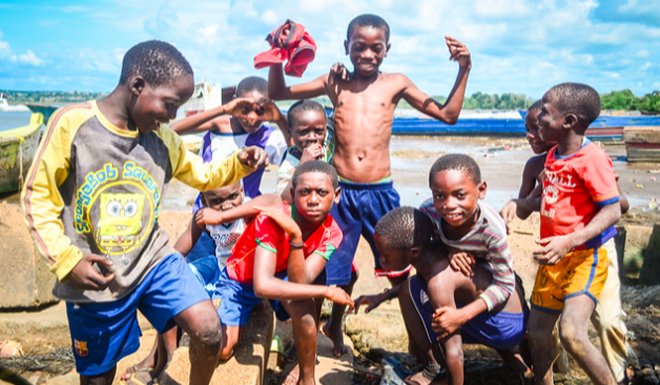
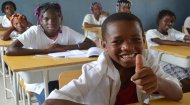


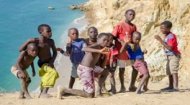

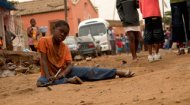

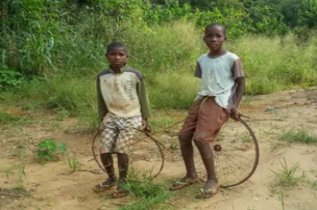
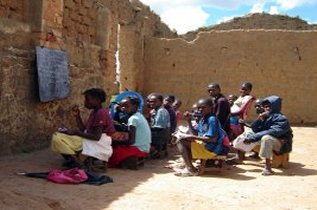 There are very few academic institutions for this age group though, meaning young people must either relocate to a regional urban area or drop out of education entirely. This is especially true for girls who are expected to stay at home helping their families. As such, most children don't continue their studies which also has to be paid for at a secondary level. Unsurprisingly, less than 0.7% of children in Angola attend university although there are several private and religious Universities in Luanda, the nation's capital city. Children in Angola speak a number of different languages from the official Portuguese to Chokwe, Fiote, Kikongo, Kimbundu, Kwanhama, Luvale, Muhumbi, Nhaneca, Nganguela and Umbundu.
There are very few academic institutions for this age group though, meaning young people must either relocate to a regional urban area or drop out of education entirely. This is especially true for girls who are expected to stay at home helping their families. As such, most children don't continue their studies which also has to be paid for at a secondary level. Unsurprisingly, less than 0.7% of children in Angola attend university although there are several private and religious Universities in Luanda, the nation's capital city. Children in Angola speak a number of different languages from the official Portuguese to Chokwe, Fiote, Kikongo, Kimbundu, Kwanhama, Luvale, Muhumbi, Nhaneca, Nganguela and Umbundu.


